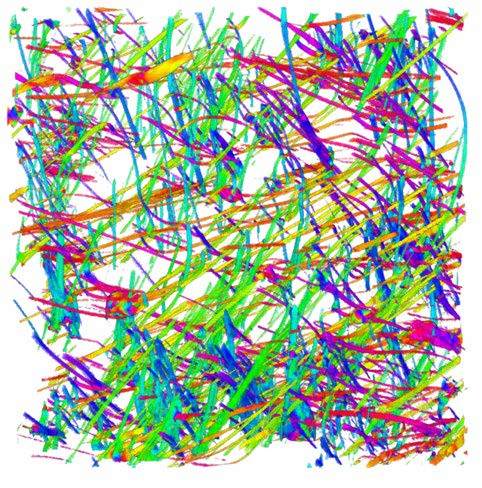Fibre Analysis
By the term ‘fibre analysis’ we understand the analysis of fibres in a material with respect to their orientation. Fibres can be found in a variety of materials, such as textiles, paper, or fibre-reinforced plastics and composite materials. For the latter ones’, the fibres are embedded in a matrix to give additional strength to the material, e.g. in windmill blades and the amount of reinforcement depends strongly on the fibres’ orientations. With X-ray imaging, we can look into the material and visualise the fibres. We provide fibre orientation analysis by using the structure tensor method to derive statistical information about the orientations and a colour-based visualisation. The obtained orientations can directly be used as an input for modelling, e.g. to be used to calculate the strength of the studied material. Besides this quantitative analysis, there is the possibility for qualitative visible fibre inspection, e.g. to get an impression about length, connectivity, possible curvatures or distribution of fibres.
Movie showing fibres from a fibre-reinforced plastic sample where the individual fibres are colour-coded according to their orientation.
We offer:
- A full 3D visualisation of the sample
- A selection of images
- Movies
- A report including selected images of the sample
- To measure the fibres’ orientations
- To provide statistical information and visualization of the orientations
- To export the orientations for modeling based on the requested mesh
- To perform modeling of structural properties based on the measured orientations

We previously used fibre analysis to study e.g. stone wool fibres in insulation materials, glass and carbon fibre-reinforced moulded plastics, windmill blades, cotton fibres in textiles or cellulose fibres derived from wood.